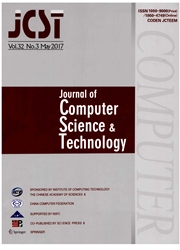

 中文摘要:
中文摘要:
A high-performance computing environment, also known as a supercomputing environment, e-Science environment or cyberinfrastructure, is a crucial system that connects users’ applications to supercomputers,and provides usability, eiciency, sharing, and collaboration capabilities. his review presents important lessons drawn from China’s nationwide eforts to build and use a high-performance computing environment over the past 20 years(1995–2015), including three observations and two open problems. We present evidence that such an environment helps to grow China’s nationwide supercomputing ecosystem by orders of magnitude, where a loosely coupled architecture accommodates diversity. An important open problem is why technology for global networked supercomputing has not yet become as widespread as the Internet or Web. In the next 20 years, high-performance computing environments will need to provide zetalops computing capability and 10 000 times beter energy eiciency, and support seamless human-cyber-physical ternary computing.
 英文摘要:
英文摘要:
A high-performance computing environment, also known as a supercomputing environment, e-Science environment or cyberinfrastructure, is a crucial system that connects users' applications to supercomputers, and provides usability, efficiency, sharing, and collaboration capabilities. This review presents important lessons drawn from China's nationwide efforts to build and use a high-performance computing environment over the past 20 years (1995-2015), including three observations and two open problems. We present evidence that such an environment helps to grow China's nationwide supercomputing ecosystem by orders of magnitude, where a loosely coupled architecture accommodates diversity. An important open problem is why technology for global networked supercomputing has not yet become as widespread as the Internet or Web. In the next 20 years, high-performance computing environments will need to provide zettaflops computing capability and 10 000 times better energy efficiency, and support seamless human-cyber-physical ternary computing.
 同期刊论文项目
同期刊论文项目
 同项目期刊论文
同项目期刊论文
 期刊信息
期刊信息
